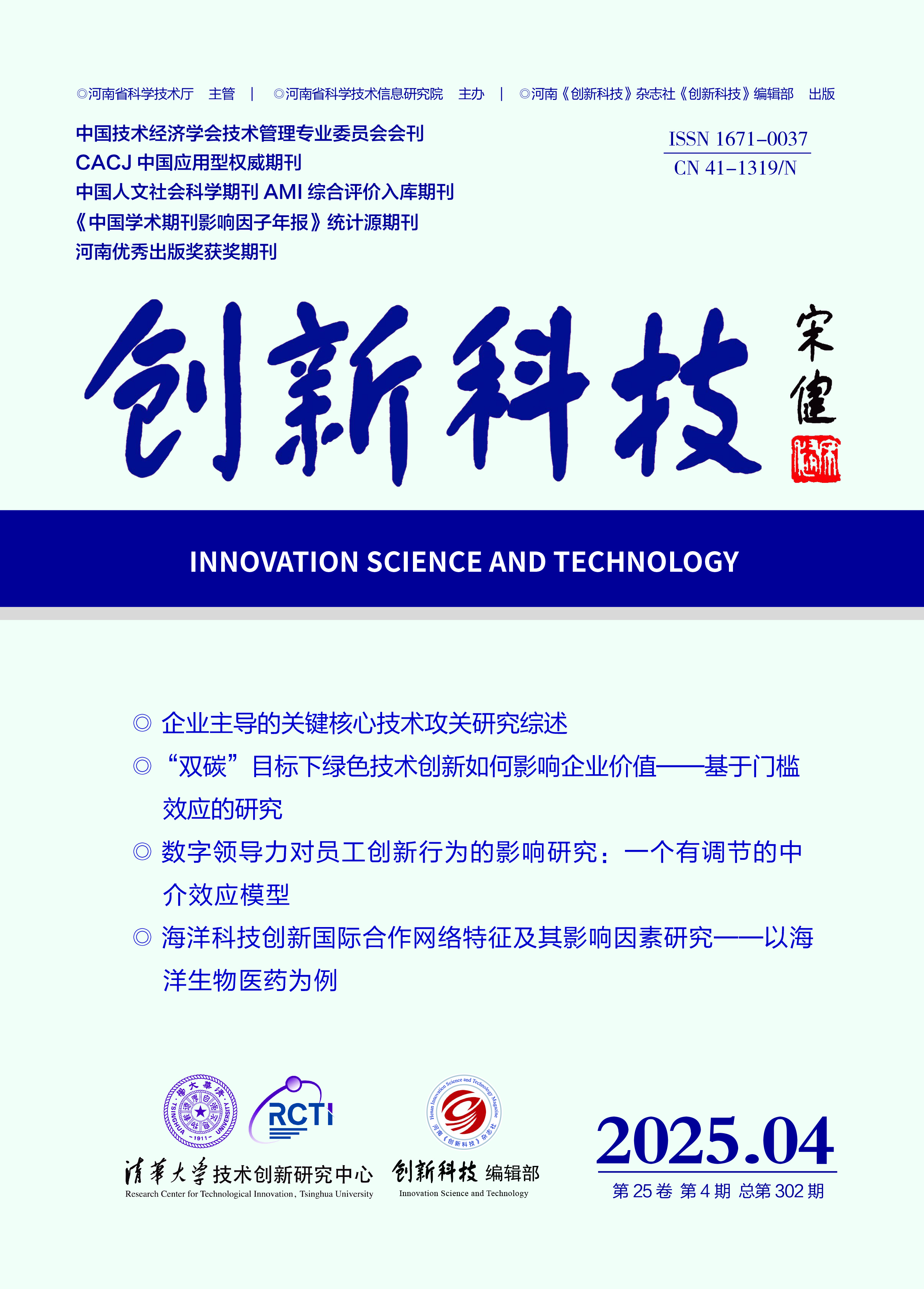INNOVATION SCIENCE AND TECHNOLOGY
Quick Search

All publication are peer-review
Peer review will take the from of double-blind review Judge objectively and impartially
There is no conflict of interest for the reviewer
Review articles shall be kept strictly confidential prior to publication
Enterprise's R&D and Innovation Management
Digital Transformation, Innovation Efficiency and Dual Innovation
——Based on Moderating Effects of Risk Taking
Ma Guozhang, Song Baosheng
(School of Economics and Management, Henan Agricultural University, Zhengzhou 450046, China)
Abstract: In recent years, China has consistently emphasized the pivotal role of innovation in driving the construction of China-style modernization and has reinforced the prominence of en⁃ terprises as the primary drivers of innovation. With the popularization of digital technology, digi⁃ tal transformation has gradually emerged as a catalyst for augmenting both the quality and effi⁃ ciency of enterprise innovation activities. However, existing literature primarily focuses on exam⁃ ining the overall impact of digital transformation on enterprise innovation activities, with limited research exploring how it promotes dual-element innovation development within organizations from an organizational "dual nature" perspective. This study utilizes the CSMAR and WIND databases to examine non-financial A-share listed companies in Shanghai and Shenzhen from 2007 to 2021, employing measurement meth⁃ ods proposed by Du Shanzhong and Wu Fei, among others, to calculate variables related to ex⁃ ploratory innovation, exploitative innovation and digital transformation, and explore the mecha⁃ nism of digital transformation to promote enterprises to carry out dual innovation. The research findings demonstrate that digital transformation positively influences enterprise dual-sided inno⁃ vation. Mechanism verification reveals that digital transformation enhances innovation efficiency as a driver of enterprise dual-sided innovation. Furthermore, the level of risk-taking within en⁃ terprises has a synergistic moderating effect on the relationship between digital transformation and enterprise dual-sided innovation. Robust regression results are obtained after addressing en⁃ dogeneity issues and accounting for variable measurement biases. Heterogeneity analysis indi⁃ cates distinct driving effects across different ownership types and regional characteristics: while no significant differences are observed in terms of exploratory innovation due to digital transfor⁃mation; non-state-owned enterprises experience greater promotion of exploitative innovation compared to state-owned enterprises as a result of their engagement with digital transformation; when considering regional analysis, no significant differences are found in terms of exploratory innovation in the eastern region but show significance at 5% level in the central region and at 1% level in the western region; for exploitative innovation, significant differences are observed at a 5% level both in eastern and western regions while showing significance at a 1% level in cen⁃ tral region. Compared to prior literature, this paper contributes in the following three aspects: Firstly, it unveils that digital transformation effectively facilitates enterprises to engage in exploitative in⁃ novation and exploratory innovation, thereby expanding the research scope of digital transforma⁃ tion and dual-sided innovation. Secondly, through empirical testing of the mediating mechanism of innovation efficiency, it extensively explores the positive driving relationship between digital transformation and enterprise dual-sided innovation. Thirdly, by introducing the moderating fac⁃ tor of company risk-taking level when analyzing the impact mechanism of digital transformation on improving enterprise dual-sided innovation capacity, it enhances both theoretical foundation and empirical experience for further studying how digital transformation drives improvement in enterprise dual-sided innovation capacity. The research findings partially unveil the inherent rationale behind digital transformation and dual-sided innovation, offering valuable insights for enterprises to accomplish digital trans⁃ formation and enhance their capacity for dual-sided innovation. Simultaneously, they also pro⁃ vide crucial theoretical guidance for China's pursuit of a digital economy and implementation of an innovation-driven development strategy.
Key words: digital transformation; dual innovation; innovation efficiency; risk taking